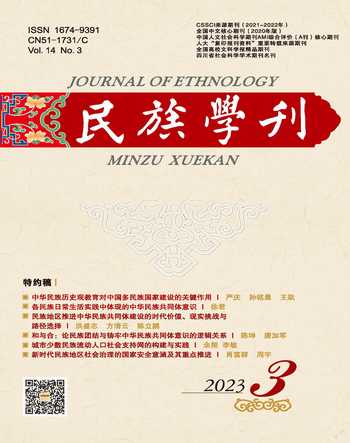The Tusi System and the National Governance Approach in the Ming and Qing Dynasties
Yuan Yaqin,Li Liangpin
DOI:10.3969/j.issn.1674-9391.2023.3.015
Abstract:
Tusi (native officials) system was a political basis for the Ming and Qing dynasties to govern the Tusi and Tusi areas, and it was also a necessary condition for ensuring the stability of the border areas. The Tusi system of the day, characterized by state-led, up-down interaction and pluralistic co-governance, strongly appeared to be an effective approach of national governance, laying a solid foundation for the enrichment and improvement of the governance system and administrative capabilities of the dynastic state. This paper presents an in-depth discussion on the Tusi system during the Ming and Qing dynasties from the perspectives of state-led, up-down interaction and pluralistic co-governance, in order to provide some historical references for the national governance of ethnic minority areas in the new era. This analysis demonstrates the following:
Firstly, the Tusi system in the Ming and Qing dynasties apparently had been always a state-led one, as reflected in the following aspects: 1) The central government of the Ming and Qing dynasties had invariably controlled the formulation right on systems such as the appointment of Tusi officials, Tusi inheritance, Tusi tribute, Tusi law, Tusi requisition, Tusi education, Tusi etiquette, Tusi placement, and Tusi distribution; 2) the central administration of the Ming and Qing dynasties held the power to handle potential corruption or crime in the passing on of Tusi titles; 3) the system design, tools of government policy, and supervision system of the national government of the Ming and Qing dynasties laid a solid foundation for the extension of the state power in the Tusi area, and achieved due results.
Secondly, the Ming and Qing dynastiesseemed to be a period when the central leadership and the Tusi region interacted most frequently. Dynastic states interact up and down through a “top-down” or “bottom-up” path. 1) The Tusi system was not only a unity of the dynastic state and the regional management institutions and institutional norms of Tusi, but also a unity of the governance of the dynastic state system and the actual power of Tusi in various places; 2) There were five bureaucratic levels that, together with Tusi, jointly governed the Tusi area; 3) frequent contact between the central government and the people of all ethnic groups in Tusi area inspired all ethnic peoples in the Tusi area and the dynastic state to learn from each other and achieve a consistent shared cultural identity.
Thirdly,“pluralistic co-governance” refers to the joint governance of the Tusi and Tusi areas by multiple people, which was modeled after the governance of the Tusi system. It was a learning experience of the dynastic state constructed in the likeness of the practice of Tusi system governance, and it became an institutional innovation in the process of national governance during the Ming and Qing dynasties. 1) The Tusi system governance system in the Ming and Qing dynasties could be summarized as “one center, two themes, three major goals, four units of governance, and five spheres”. 2) A community of Tusi system governance—involving the administrative organs of prefectures and counties, official grass-roots organizations, grass-roots organizations jointly built by officials and local people, and Tusi clan organizations—had been built in an effort to accelerate the overall promotion of Tusi and Tusi regional governance in a pluralistic co-governance manner.
Key Words:
the Tusi system; national governance; approach; institutional governance
- 民族学刊的其它文章
- The National Security Implication of Social Governance in Ethnic Minority Areas in the New Era and Its Promotion
- Modern Road and Traditional Social Changes of Ethnic Minorities:Based on the Investigation of Puxiong Yi Society Along the Chengdu-Kunming Railway System
- From Little Tradition to Great Tradition:The Influence of the Gaitu Guiliu Policy on Social Life in Southwestern Hubei
- Trade Control in Khams during the Early Qing Dynasty and Its Reasons
- 各民族日常生活实践中体现的中华民族共同体意识
- 民族地区推进中华民族共同体建设的时代价值、现实挑战与路径选择

